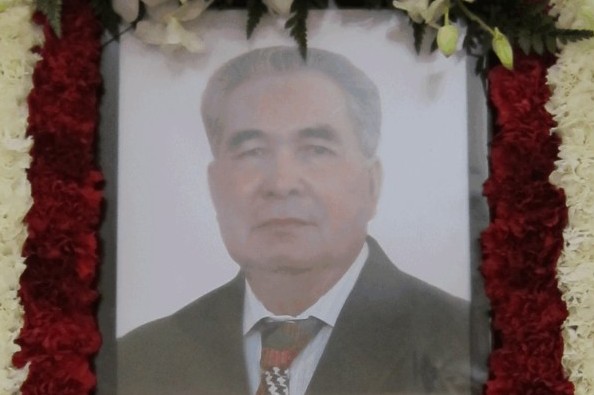For Cheng Jin Lai, Bicycling Was a Necessary Means to an Active Life
4:03 PM PST on November 15, 2013
Safe streets advocates, family, and friends of Cheng Jin Lai gathered yesterday for a memorial service of the 78-year-old man who was killed by a Muni driver on October 18 while making a trip on his bicycle at the crash-prone intersection of Bryant, Division, and 11th Streets.
The bicycle was Lai's primary mode of transportation, "out of necessity and his passion," said Mark Fong, an attorney for Lai's family. Fong said Lai was making his regular trip from his home at a senior housing center in SoMa to deliver his and his family's recyclables to a recycling center when he was hit by the Muni bus driver, who appeared to make a right turn into Lai's path, though SFPD is still completing the crash investigation report.
"I guess you would call him an original, ahead-of-his-time kind of guy," said Fong. "It's part of Chinese culture to be very frugal and conservation-minded -- to waste nothing. That was part of his thing."
A retired Vietnam native who in 1996 moved to San Francisco from China with his wife of 60 years to live near his daughter, Lai became a U.S. citizen in 2003. Lai lived on a fixed income without a car, frequently traveling by bike to other neighborhoods like Chinatown and Fort Mason, where he loved to fish, said Fong and members of Lai's family.
"It's pretty amazing -- I hope I'm that healthy and active when I'm 78," said Fong.
Lai was the fourth bicycle rider to be killed on San Francisco streets this year -- the third in SoMa (a fourth occurred in the Mission). All deaths appear to have been caused by drivers of trucks and buses who illegally made right turns into the victims, though none have been charged.
"These deadly and serious crashes on SoMa streets are not one off 'accidents,'" says a website set up by the Lai family where the public can donate to a memorial fund. "These deaths are preventable and within the power of the city to change immediately."
The couple dozen who attended Lai's memorial service included reps from community organizations like the Chinatown Community Development Center and the SF Bicycle Coalition. Supervisors Jane Kim and David Campos were also there.
"This is a real tragedy for the community," said CCDC Executive Director Norman Fong, in a statement. "We can hopefully motivate San Francisco to make streets safer for bicyclists and pedestrians. We need to honor Mr. Lai. Our hearts go out to the family."
For the increasing number of San Francisco residents choosing to bike as an affordable, healthy way to get around, the odds are stacked against them, especially in downtown neighborhoods like SoMa, where streets are heavily designed for speeding motor traffic at the expense of safety, said SFBC Executive Director Leah Shahum. Meanwhile, more light is being shed on the entrenched bias against bicycle riders among many SFPD officers following the bungled crash investigation into the death of 24-year-old Amelie Le Moullac in August.
"[Lai's] reasons for biking probably reflect a growing number of people's in San Francisco. It can be such an easy, efficient, affordable, and fun way to move around the city," said Shahum. "They should be rewarded for wanting to do so. In today's environment, they are certainly not rewarded by the types of choices the city is making on the streets and by the way our enforcement efforts are focused."
Since Lai's death, SF Weekly reporter Joe Eskanazi also discovered that the Muni bus involved in the crash lacked a required wheel guard, known as an S1-Gard, which might have saved Lai's life by pushing him out of the way of the wheel that crushed him. The guards come standard issue on Muni buses, but apparently the agency routinely sent out buses without the guards. Only several days after SF Weekly's reports were published did Muni management order a full wheel guard inspection of the 50 buses of the model type involved the crash (as opposed to all Muni buses), and order that any buses without the wheel guards be kept off the streets.
"It was deemed more expedient for Muni to cover its rear end than its rear wheels," Eskanazi wrote in a November 6 article. "And, even after outside pressure shamed the agency into action, it still claims it violated no 'regulatory' requirements. Its official position is that, in establishing a policy to install devices on the bus to prevent people from being crushed, it was doing everyone a favor."
"San Francisco needs to be leading the way in making our streets as safe as possible," Supervisor Campos told reporters after Lai's memorial service. "It requires better education, enforcement, and it's really about the city making it a priority to think about safety in everything that we're doing."
Stay in touch
Sign up for our free newsletter




